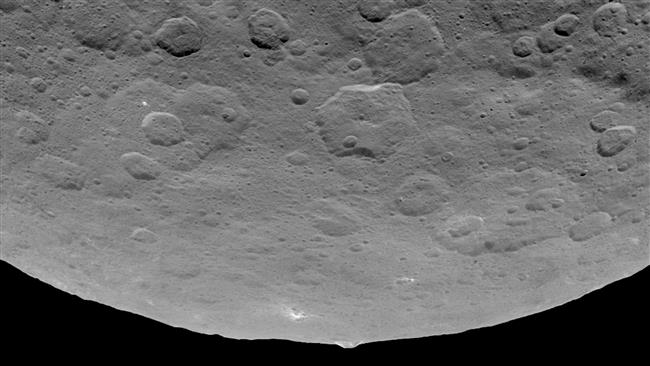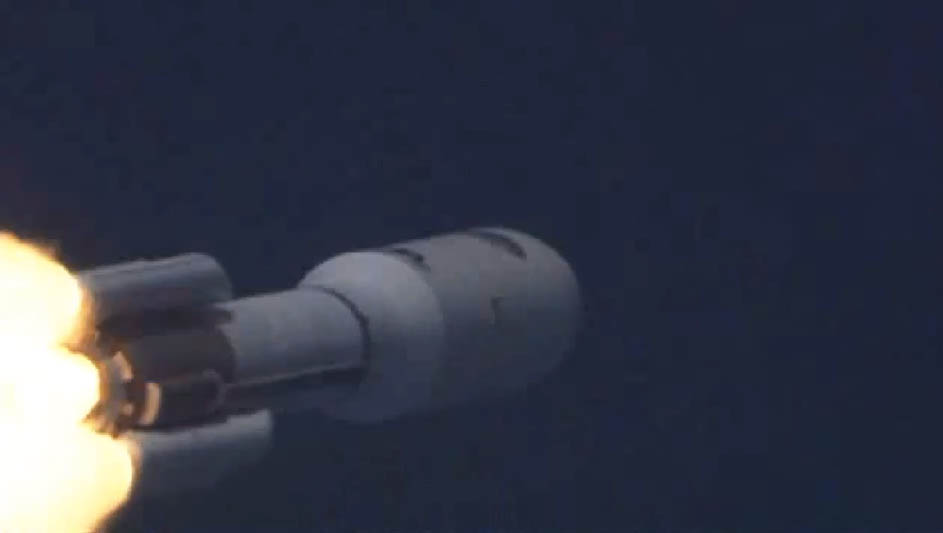The #Doodle4Google victor honors 'the black people that came before us'
Mar 24, 2016
The theme of this year's Doodle 4 Google was simply "What makes me, me,' a theme that really resonated with Akilah. On her blog, she has also explained her doodle as the representation of the six most special things for her .
This week's space station delivery rich in science and tech
Mar 24, 2016
Husband and six crewmates were killed when Columbia , which suffered wing damage during launch , broke apart during re-entry. An Atlas rocket provided by United Launch Alliance will provide the ride from Cape Canaveral Air Force Station.
Heidi Cruz responds to Donald Trump's threat
Mar 24, 2016
Earlier, speaking on Fox Business Channel, Cruz used a line that is very similar to one from a movie to defend his wife. But Stone said, "I don't know what Trump is referring to", when he talks about "spilling the beans".
Apple's new iPhone faces challenge measuring up in China, India
Mar 24, 2016
In terms of display, the smaller iPhone features a 4-inch Retina Display with a resolution of 640x1136p. SE has a 2 GB RAM capacity that is similar to iphone 6s and better that iphone 6 that has a 1 GB RAM.
Cumbrian MP brands Corbyn's PMQs performance 'disaster' in expletive laden tweet
Mar 24, 2016
Other categories on the spreadsheet included " core group plus ", " core group negative " and " hostile group ". A spokesperson for Mr Corbyn said: "It doesn't come from this office and we have no knowledge of it".
Hornets' Jeremy Lin: Scores 21 points in Tuesday's win over Nets
Mar 24, 2016
Of course, everyone wants to be at home, especially for the first two games". "They've been playing great basketball of late". Per NBA.com, the Hornets have risen to third in three-point attempts this season, trailing only the Rockets and the Warriors.
William Hill sees lower revenue from online unit
Mar 24, 2016
The board remains committed to the share buy-back program which the company has previously announced, William Hill said. However, the bookmaker added the negotiation "may, or may not, lead to a transaction".
Obama Administration Drops Atlantic Drilling Plan
Mar 24, 2016
It drew instant opposition from seaside and tourist communities in all those states, including Myrtle Beach and Charleston in SC . The Department of the Interior is expected to announce full details of the new measures some time this week.
TNT's Sager says leukemia no longer in remission
Mar 24, 2016
I go, 'I know, what are the chances?' And (the doctors said), 'Well, you've normally got 3-6 months to live. I've got too much to do. "It's not over yet, but I haven't lost it, either", Sager continues.
IEA cuts Opec, non-members estimated oil output
Mar 24, 2016
Higher prices for Brent and US crude in the second half of 2016 and 2017 have sparked renewed interest in hedging from producers. Equities and crude oil advanced as investors embraced the European Central Bank measures announced by Draghi.
AK Steel Holding Corporation (AKS)
Mar 24, 2016
The Firm is engaged in producing flat-rolled and tubular products with production activities in North America and Europe. Out of 13 analysts covering AK Steel Holding Corporation (NYSE: AKS ), 3 rate it "Buy", 4 "Sell", while 10 "Hold".
Trump promises to dismantle 'disastrous' nuclear deal with Iran
Mar 24, 2016
Calling Israel "a beacon of light unto the world", GOP candidate Senator Ted Cruz told the AIPAC audience that "peace is achievable only through strength".
South Korea confirms first case of Zika virus
Mar 24, 2016
She said Hawaii must take precautionary measures like reducing mosquito breeding sites to cut the state's risk for an outbreak. The researchers have now found strong associations with the Zika virus and several north defect associated with the virus.
How to enable Night Shift while using Low Power Mode
Mar 24, 2016
CarPlay now has location based recommendations and a deeper tie with Apple Music's recommendations and new release features. A "nearby" feature in maps will make it simple to find everything from a gas station to restaurants, coffee shops and more .
Ohio State AD Gene Smith Apologizes For Michigan Comments
Mar 24, 2016
He started off with subtweets, but now he's calling out figures in college football by name. with no regard for human life. Smith, however, seemed to take a harsher stance against the Buckeyes potentially taking spring practice down South.



